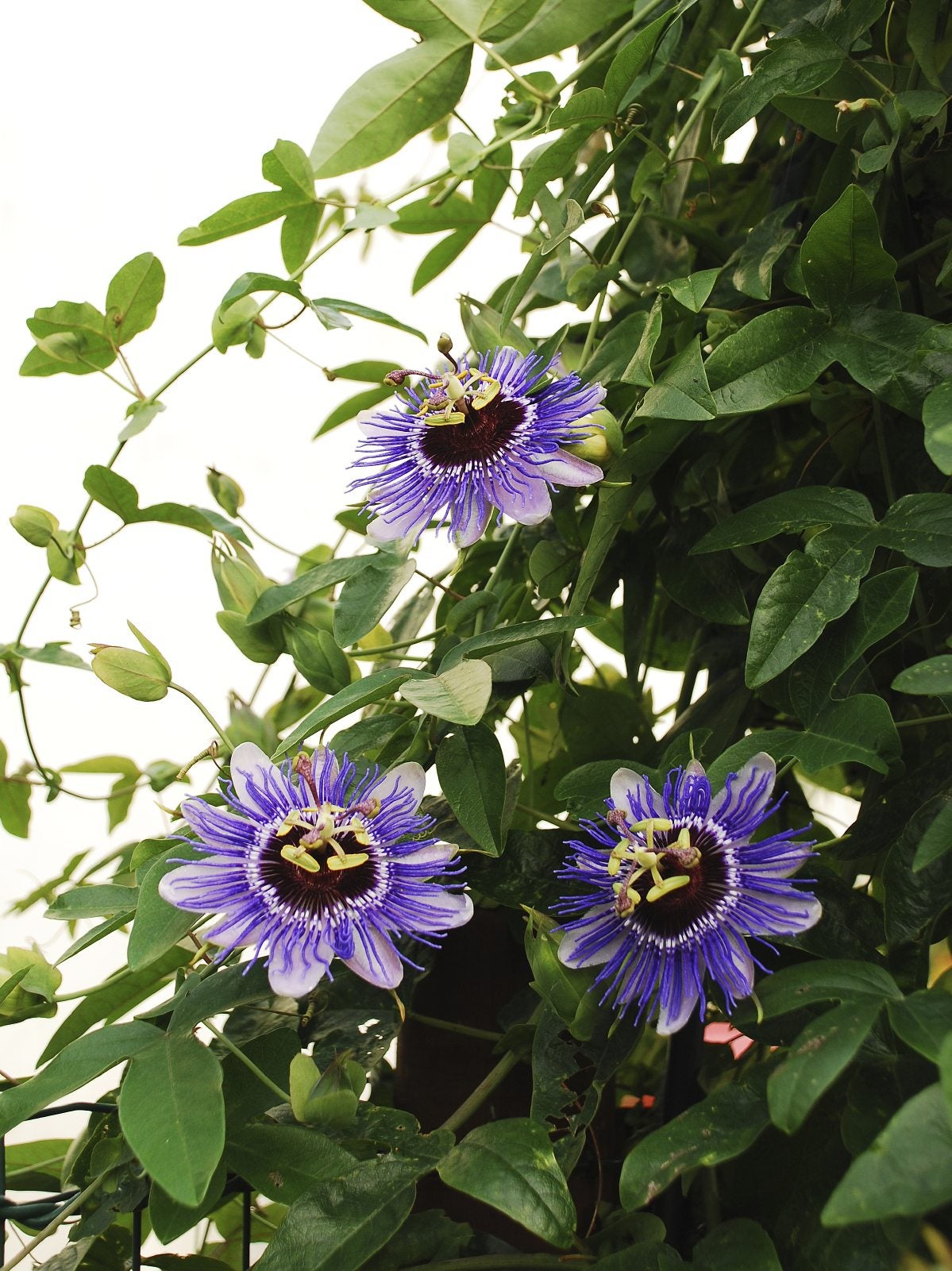Passion Vine Fertilizer: Tips On Fertilizing Passion Flowers


Passion flowers have an interesting history and an attention- grabbing bloom. Many plants in the species are native to North America. and Passiflora incarta is a common flower of the American southeastern states. These notable vines are great to grow as attractive screens, floral cover-ups or simply over an arbor as decorative shading. Caring for these intricate flowers includes properly feeding passion flower vines.
Feeding Passion Flower Vines
A casual stroll in sub-tropical states may find you spotting a wild, tangled vine in a ditch or along a roadside with complicated, scented flowers sporting distinctive fringed ray petals. The plant may or may not also bear round to oval waxy fruits of speckled purple, orange-gold or light yellow. These are passion flowers, which have become naturalized in some regions and are a commonly grown ornamental vine. The lucky gardeners who can persuade these plants to live in their landscape know that fertilizing passion flowers is the key to vines choked with blooms. Learn how to fertilize a passion flower vine and make your neighbors pea green with envy as they watch your plant flourish.
When to Apply Passion Vine Fertilizer
Fertilizing passion flowers at the correct time will ensure plenty of blooms that season and a healthy plant, as well as a bountiful harvest on those varieties that produce edible fruits. Most plants benefit from supplemental nutrients. The optimum time to give plants food is just as they are leaving dormancy. Generally speaking, that is in spring when soil and ambient temperatures warm up and new growth commences. Passion flowers are considered heavy feeders. The first application should be in very early spring. Plants cultivated for fruit are fertilized 4 times per year, but those in average culture should be fertilized every 4 to 6 weeks until fall.
How to Fertilize a Passion Flower Vine
In commercial settings, the proper fertilizer for passion flower vine is one with a NPK ratio of 10-5-20. This gives the needed nutrients for best vine growth and plenty of fruit. That said, studies have been conducted to determine the correct levels for passion vine fertilizer. A general rule for ornamental plants is a ratio of 1:1 of nitrogen and potassium. This would mean the first and last numbers of a fertilizer formula would be equal. For passion fruit vines, a food with lower numbers will still enhance the plant’s growth but leave little worry about burnt roots and dropped fruit. Some examples of a lower ratio would be a 5-7-5 or 6-6-6. A soil test prior to the first application can indicate which, if any, nutrients the area is lacking in and the pH of the soil that affects a plant’s ability to uptake nutrients. The lower number formulas are adequate for landscape plants and safe to use without adverse effects on the vine. The correct amount of passion vine fertilizer will depend upon the size of the plant. Commercial plants get 3 pounds (1.5 kg.) per plant 4 times per year. The homegrown vine that is not in production can use feeding every 6 weeks for vigorous plants with a lower number formula. In commercial settings, where plants are producing fruit, each plant needs 32 to 36 ounces (1 kg.) of nitrogen to produce maximum fruit. However, excess nitrogen can cause fruit to drop. Most passion vine fertilizer is granular and should be scraped into soil around the root zone and watered in. You may also choose a foliar spray, which is topically applied and can help prevent chlorosis in alkaline soils. Any fertilizer for passion flower vine should be deeply watered in, and soil should be drenched regularly to prevent the build-up of salt in the earth.
Gardening tips, videos, info and more delivered right to your inbox!
Sign up for the Gardening Know How newsletter today and receive a free copy of our e-book "How to Grow Delicious Tomatoes".

Bonnie Grant is a professional landscaper with a Certification in Urban Gardening. She has been gardening and writing for 15 years. A former professional chef, she has a passion for edible landscaping.
-
 4 Superfast Composting Methods: Turn Waste Into Garden Gold In 30 Days Or Less
4 Superfast Composting Methods: Turn Waste Into Garden Gold In 30 Days Or LessTry the fastest composting methods to turbocharge your pile and transform kitchen scraps and garden waste into finished compost in just a few weeks.
By Mary Ellen Ellis
-
 Best Spider Plant Soil – Complete Soil Guide And Expert Tips For Keeping Plants Happy
Best Spider Plant Soil – Complete Soil Guide And Expert Tips For Keeping Plants HappySpider plants are fun and easy plants to grow, but what is the best soil for a spider plant? Selecting the right soil is important so they can thrive.
By Bonnie L. Grant